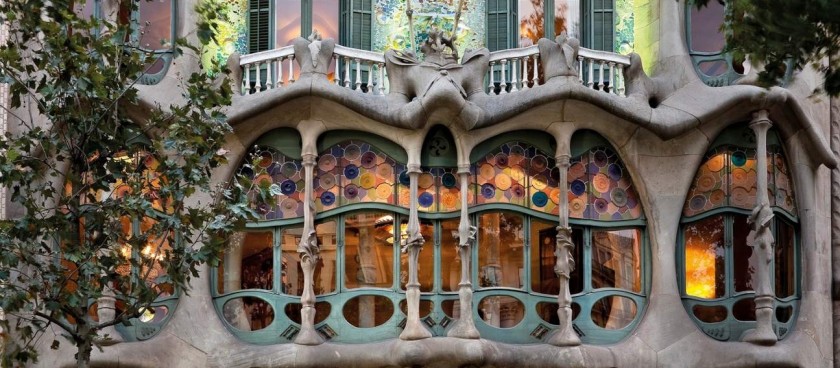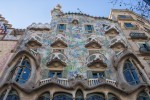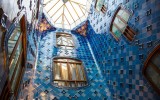- #ES03
- Passeig de Gràcia, 43, 08007 Barcelona, Spain
- +34932160306
- info@casabatllo.cat
- https://www.casabatllo.es/en/
- Working hours*:
9:00 - 21:00
Last entry: 20:00 - Prices*:
Visit Casa Battlo - 25€ - * - opening and closing times as well as entrance prices, are subject to alterations without notice. Visitors are advised to check before visiting.
- 41.3916400, 2.1647690 Copy to clipboard Copy
-
#Architectural Oddities
History of Casa Batlló
Casa Batlló is located at number 43 on Paseo de Gracia, a street that, in the past, connected the city to Villa de Gracia, which today is a fully integrated district of the city.
Development of Paseo de Gracia
Since 1860, when an ambitious urban plan was approved in Barcelona (known as the Cerdà Plan), Paseo de Gracia has become the city’s backbone and its most important families started to set up home here. In this manner, in the 19th Century, the street became a promenade for pedestrians and horse-drawn carriages, and from the 20th Century it became a main avenue for cars.
Originally, the building was built in 1877 by Emilio Sala Cortés (one of Gaudí’s architecture professors), when there was still no electric light in Barcelona. In 1903 it was purchased by Mr Josep Batlló y Casanovas, a textile industrialist who owned several factories in Barcelona and a prominent businessman.
Construction of Casa Batlló
Mr Josep Batlló granted full creative freedom to Antoni Gaudí, putting him in charge of a project that initially entailed demolishing the building. However, thanks to the courage shown by Gaudí, the demolition of the house was ruled out, and it was fully reformed between 1904 and 1906. The architect completely changed the façade, redistributing the internal partitioning, expanding the patio of lights and converting the inside into a true work of art. Besides its artistic value, the building is also extremely functional, much more characteristic of modern times than of the past. Some even see elements that herald the architectural trends of the late 20th Century.
The Bone of Contention
In addition to Casa Batlló and at the same time, prominent architects were also reforming other houses that, at the time, were competing for the urban awards convened by the Barcelona City Council. Therefore, this specific period was known as The Bone of Contention. These houses are also in the modernist style and, along with Casa Batlló, they are currently part of a unique group formed by:
– Casa Amatller (by the architect Josep Puig i Cadafalch).
– Casa Lleó Morera (by Lluís Domènech i Montaner).
– Casa Mulleras (Enric Sagnier).
– Casa Josefina Bonet (Marcel-li Coquillat).
Recent history
From the 1950s Casa Batlló was no longer owned by the Batlló family. After being taken over by different companies and individuals, since the 1990s the building has been in the hands of its current owners, the Bernat family, who have fully restored the house.
In 1995, the family opened the house to the public and presented this architectural gem to the world, offering the use of the building for events. Since 2002, coinciding with the International Year of Gaudí, cultural visits have also been offered at Casa Batlló. Both activities are currently available, with constant innovations in terms of offer and contents.
At present, Casa Batlló is a UNESCO World Heritage site and an icon in Barcelona, a must see for those who want to discover Gaudí’s work and modernism at its finest. It is also one of the most highly rated cultural and tourist attractions, welcoming 1 million visitors every year.



